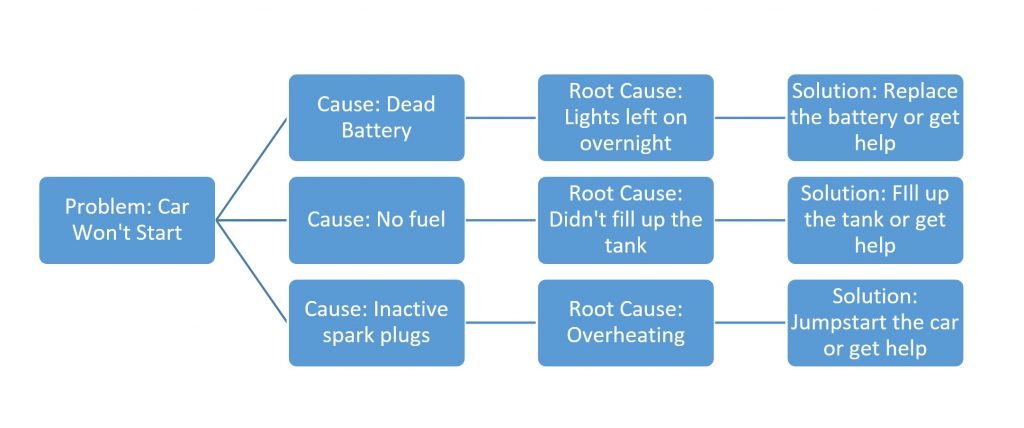How to Create a Decision Tree for Root Cause Analysis
Root Cause Analysis is an invaluable skill to have in your Six Sigma toolkit. But how do we use Root Cause Analysis to the best effect? What tool is most helpful for this task? That would be the Decision Tree. This method involves branching between causes and outcomes to illustrate the consequences of your choices.
Below is our practical guide on how to create your decision tree as part of RCA:
Using Decision Trees in Root Cause Analysis
One of the great things about decision trees is that they allow you to identify root causes with little effort. They work by highlighting each factor and the causes attributed to it, as well as several possible corrective actions.
The tree structure comes from the branching method involved in making a decision tree. First, you identify the problem (which should be easy enough!), then you need to outline the possible causes and root causes. This may be more difficult than it sounds, as the causes and root causes (that’s right, there could be more than one) of a problem are not always obvious.
An excellent tool to get around this is the 5 Whys, which involves in-depth questioning to discern the cause of a problem. Next, you must devise a corrective action according to the information you have assembled in the rest of the graph. For example: If your problem is that your car won’t start, the cause could be that it has no fuel. The root cause of this could then be that you forgot to fill up the tank, and the corrective action is, of course, to find some fuel.
Using decision trees enables you to break down quite broad categories into more smaller ones, achieving finer levels of detail with each step. By mapping the fine details of certain tasks and scenarios (i.e. your car won’t start), it becomes easy to find the underlying cause of whatever problem is vexing you and to theorize solutions.
An Example Decision Tree

Example Decision Tree for Root Cause Analysis
Above is a basic decision tree, which can be easily modified to suit any situation. You can also use decision trees to convey additional information, such as potential risks, drawbacks, and repercussions. Decision trees are often used for a similar purpose to RCA and Six Sigma. As a support tool, Decision trees are highly effective at determining consequences of decisions.
Don’t underestimate the value of tools like decision trees when it comes to RCA. Decision trees are highly useful to accomplish seemingly difficult goals and achieve solutions for problems that may, at first, appear insurmountable. The key factor involved is the detail: in-depth, organized, comprehensive data. Try it for yourself to see what the decision tree can do for you. It might surprise you!
Contact Us for Root Cause Analysis Training (RCA).
SixSigma.us offers both Live Virtual classes as well as Online Self-Paced training. Most option includes access to the same great Master Black Belt instructors that teach our World Class in-person sessions. Sign-up today!
Virtual Classroom Training Programs Self-Paced Online Training Programs






